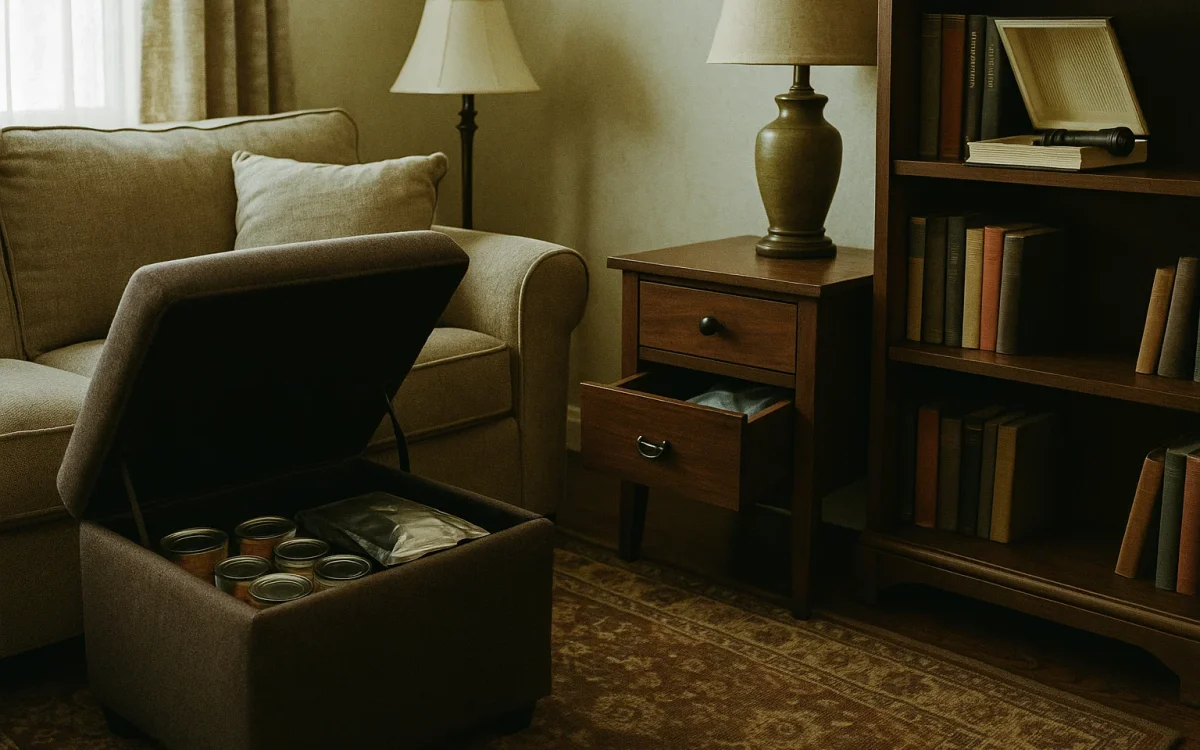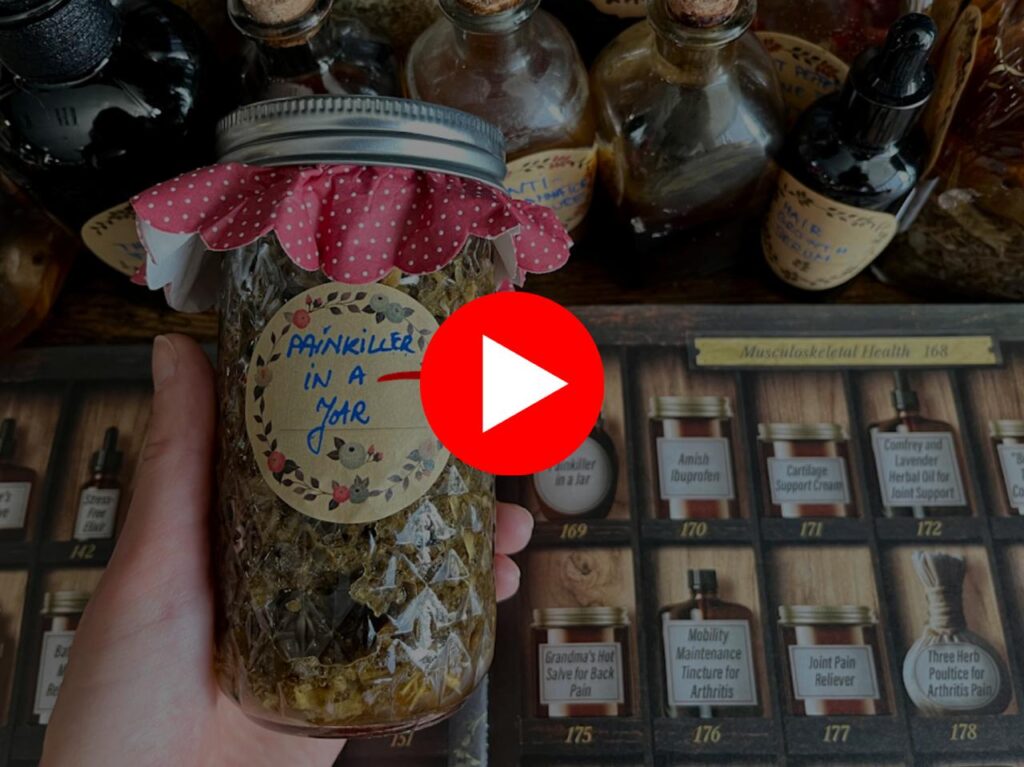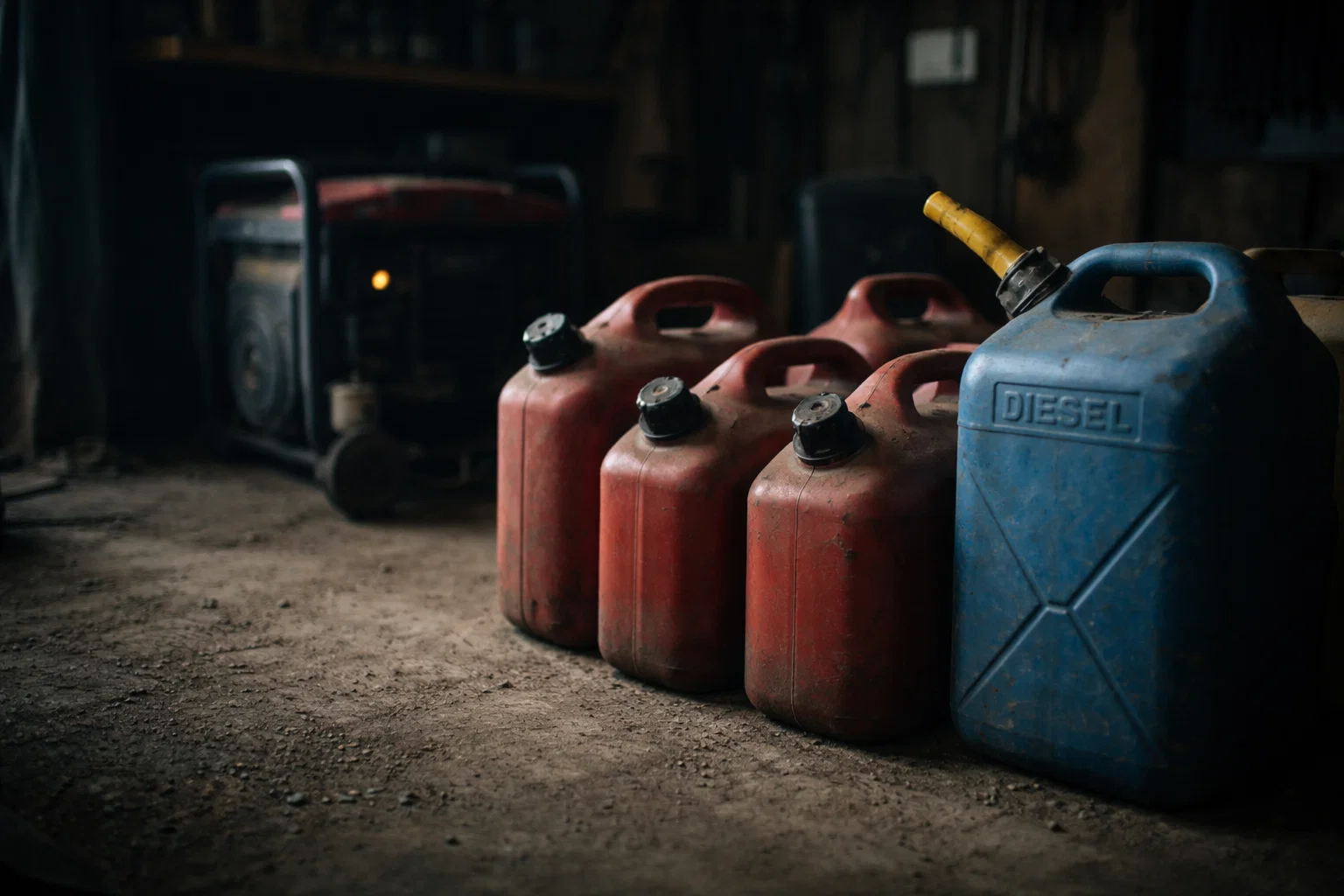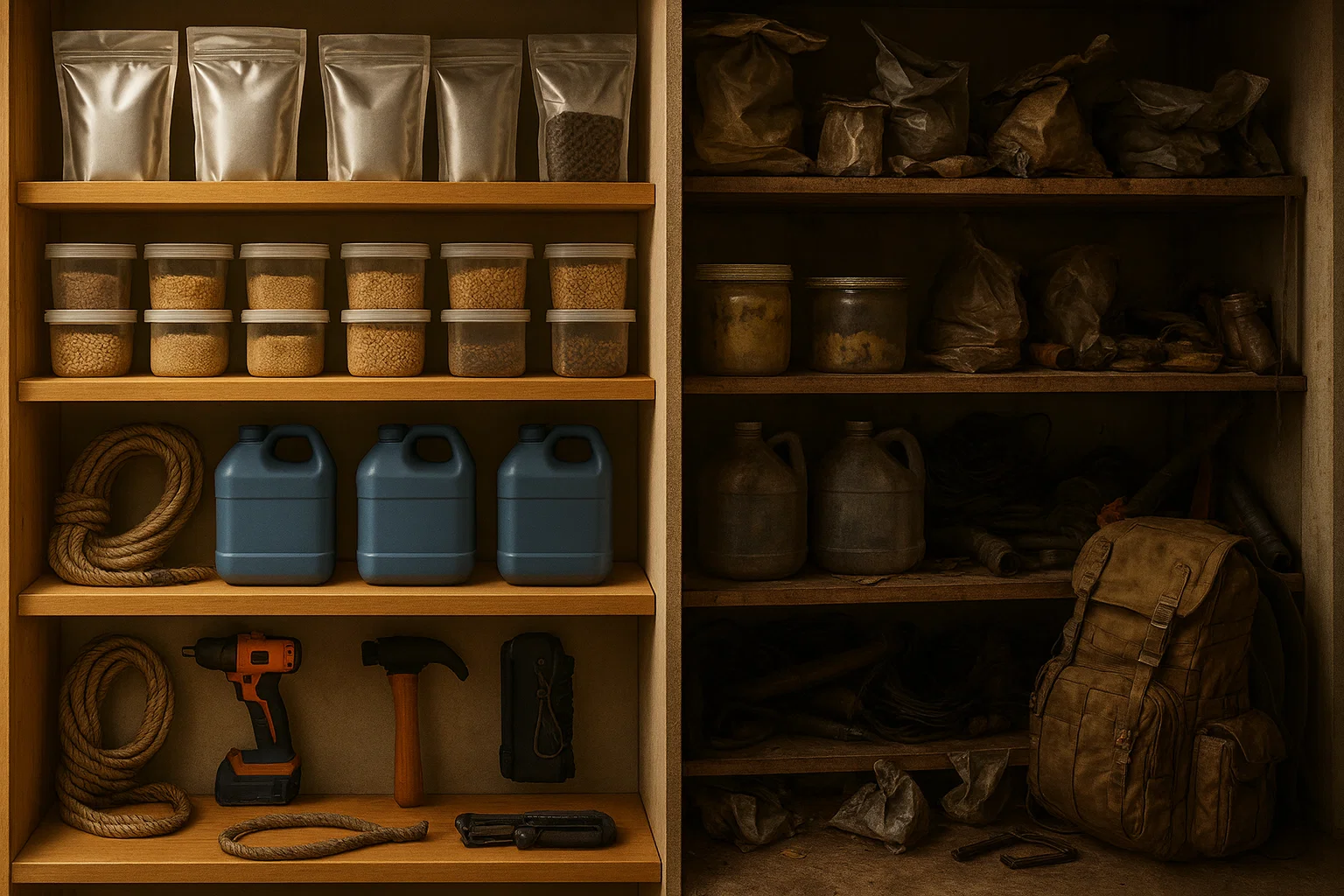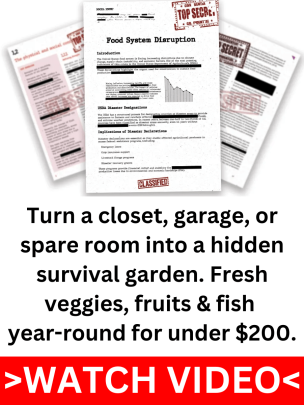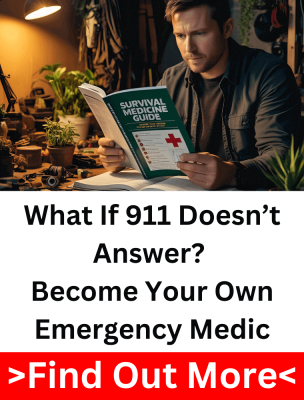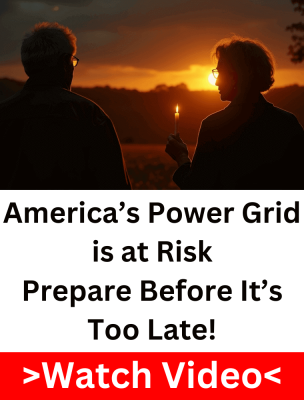It always starts the same way. The storm warnings roll in, the power flickers, and within hours, darkness. Streets go quiet, grocery stores empty out, and you start hearing about break-ins on the local radio. This isn’t a movie. This is what happens when people panic. If you’ve prepped smart, you’ve got food, water, meds, maybe even backup power. But here’s the thing: it’s not just about owning supplies, it’s about protecting them. And when desperation hits your neighborhood, the smartest move you can make is having hidden spots to store emergency supplies where no one else would ever think to look.
Too many people stash their preps in places that are obvious, garages, basements, closets. That might seem convenient now, but in a crisis? Those are the first spots thieves, looters, and even desperate neighbors will check. The truth is, if your supplies aren’t well hidden, they might as well be gone. That’s why we’re digging into practical, under-the-radar hiding spots inside your own home, places that are easy to set up, hard to find, and could make the difference between getting through the storm or becoming someone else’s target.
Inside Furniture You Already Own
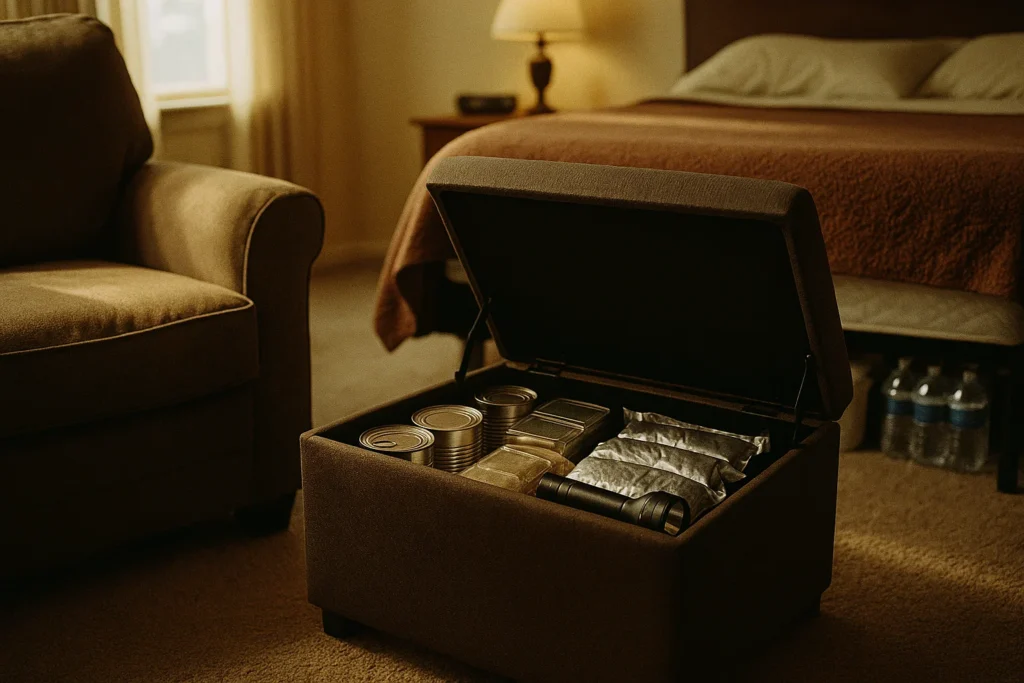
One of the smartest, and most overlooked, hidden spots to store emergency supplies is right under your own backside. Literally. That couch you sit on every evening? It’s got more potential than you think. The same goes for ottomans, recliners, even the hollow space under a bed’s box spring. Most folks don’t think of furniture as storage, which is exactly why it works so well when you need to hide critical gear in plain sight.
These spots are perfect for stashing items like canned food, vacuum-sealed meals, flashlights, and even extra ammo. A box spring can easily fit a small supply of water bottles or flat-packed emergency rations. An ottoman with a lift-top or a drawer couch can hold tools, batteries, or even a medical kit. These aren’t just convenient, they’re the kind of best hidden storage ideas for survival gear that blend in seamlessly with your home setup.
If you go this route, make sure the furniture is easy to access but not easy to spot as a stash. Don’t label anything obviously. Use low-profile containers. And always account for weight, don’t overload a spot that could break under pressure or be too heavy to move quickly if needed. The goal here is to store emergency items where they’re both protected and invisible, without making your living room look like a supply depot.
Behind or Inside Walls and Floors
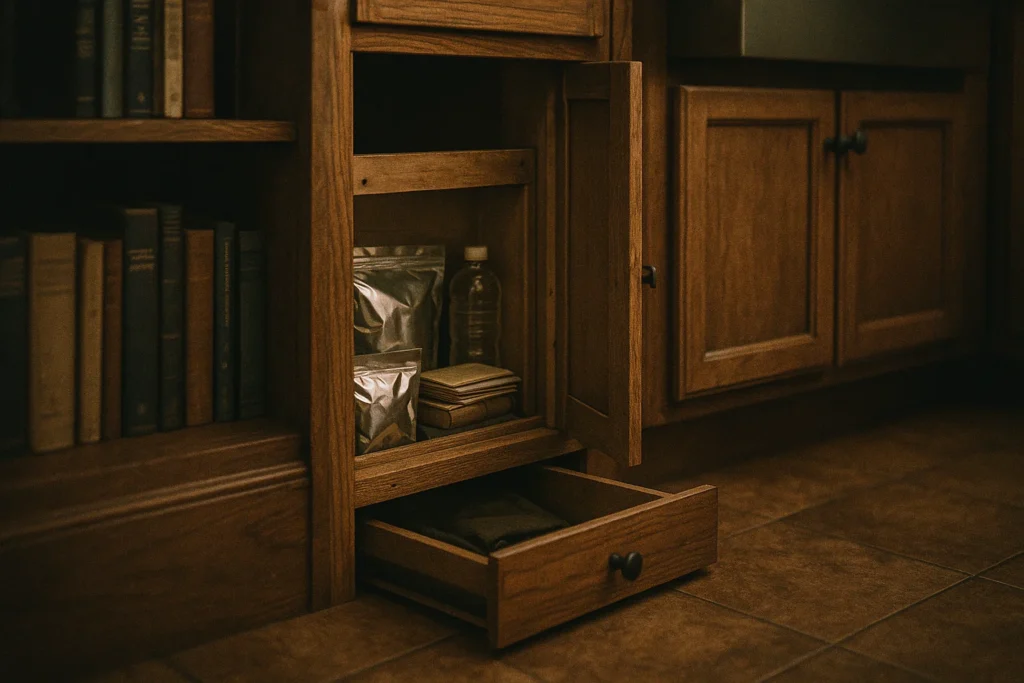
Some of the most secure hidden spots to store emergency supplies aren’t visible at all, they’re built into your home. If you’ve got a little DIY confidence, the space behind a wall or beneath your floorboards can become a lifesaver. False panels, toe-kick drawers under cabinets, and even sections of removable baseboard trim can all be turned into concealment zones that no one would think to check in a rush.
The beauty of these spaces is that you don’t need to tear your house apart to make them work. A simple magnetic catch on a faux cabinet panel or a flush-mounted access door behind a piece of furniture can give you quick reach without drawing attention. Pulling up one floorboard or installing a toe-kick drawer under your kitchen cabinet doesn’t take a contractor, just a steady hand, a jigsaw, and a few dollars in hardware.
Each method has its pros and cons. Floorboard stashes give you more room, but they can be a pain to get to if furniture is in the way. False wall panels are stealthy but usually work best for flatter items, documents, cash, ammo, maybe some freeze-dried food in Mylar bags. Toe-kick drawers are great for access and blend in perfectly, but they tend to be shallow. It all comes down to what you’re hiding, and how often you’ll need to reach it.
One word of caution: steer clear of placing anything near live electrical wiring or outlets. That includes microwave walls, breaker panels, or HVAC chases. Not only is it dangerous, but it could void your insurance or cause serious problems if there’s ever a fire. Stick to interior walls with no wiring or behind cabinetry where things stay cool and dry. When done right, these kinds of concealed emergency supply storage ideas give you peace of mind, and keep your gear where only you know to look.
Disguised Everyday Items
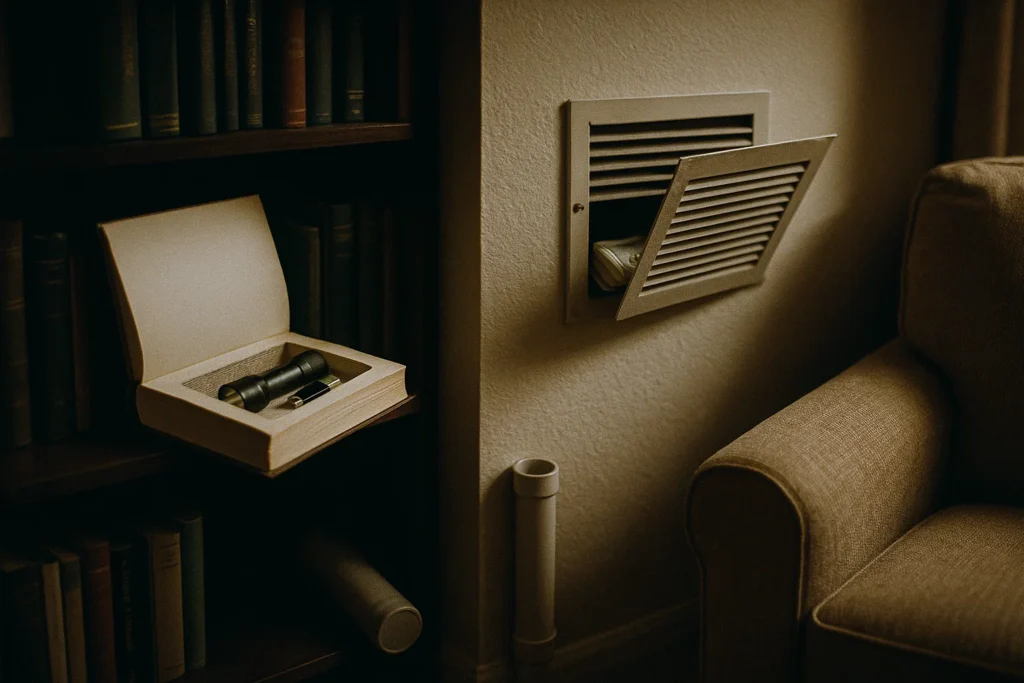
Some of the cleverest hiding places don’t require tearing up floors or drilling into walls, they’re already in your home, hiding in plain sight. A fake air vent cover, for example, looks just like part of your HVAC system, but behind it you can keep everything from extra cash to critical medicine. Hollowed-out books on a shelf full of real ones? No one’s flipping through pages during a looting spree. And if you’ve got exposed PVC pipes in the garage or basement, it’s easy to install a capped-off “dummy” section that blends in with the rest of your plumbing.
These kinds of setups are perfect for small but essential items, flash drives with important documents, water purification tablets, antibiotics, or even spare keys and ID copies. They’re not meant for bulk storage, but they work incredibly well as secret places for emergency kits at home, especially if you layer your supplies, keeping backup essentials spread across several safe, unnoticeable spots.
Under Appliances or Fixtures
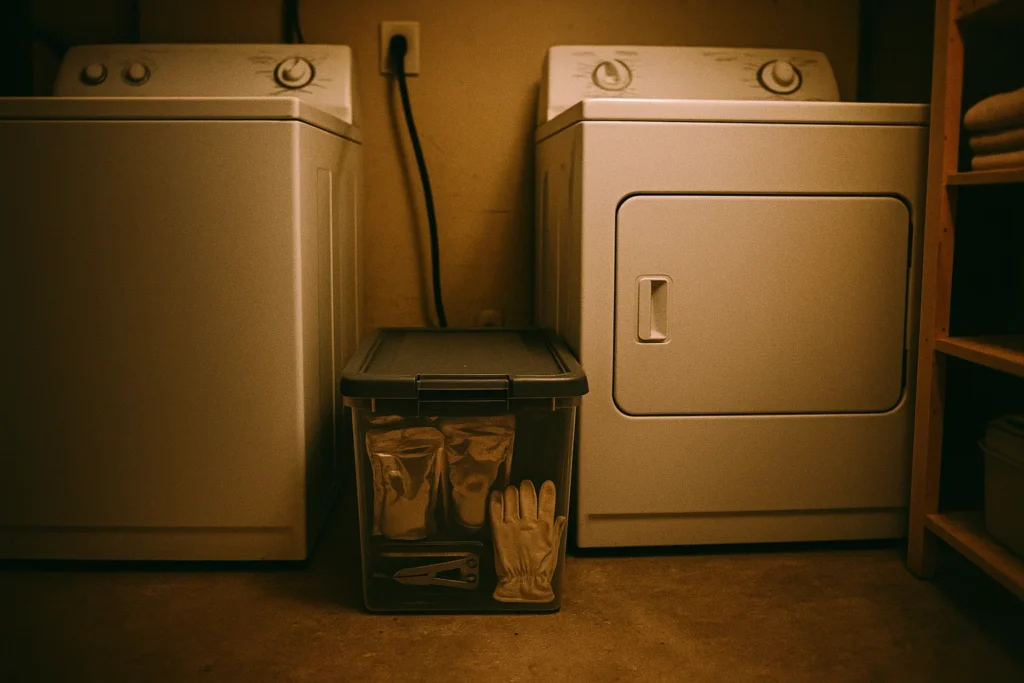
If you’re looking for hidden spots to store emergency supplies that don’t require any construction, start with what’s already heavy, hard to move, and rarely looked behind, your large appliances. Behind the washer or dryer, beneath the water heater, or under a fixed bathtub, there’s often just enough space to tuck away a weatherproof container with backup gear. The trick is making sure it’s sealed tight, stays out of sight, and doesn’t interfere with the appliance itself.
This works best for items that can handle a little heat but not moisture, think vacuum-sealed food packs, gloves, multi-tools, or backup phone chargers. Avoid anything that could melt, corrode, or spoil over time. Also, don’t use this spot for anything you’ll need to access quickly in a crisis. These are your “last resort” stashes, meant to be there when everything else is gone, and you need to dig a little deeper to keep going.
Unused Spaces Most People Forget
Sometimes the best hiding spots are the ones you’ve walked past a hundred times without thinking twice. That dusty top shelf in your linen closet? Perfect for storing lightweight emergency supplies in a nondescript box labeled “old towels.” Curtain rods, especially the hollow kind, can hold rolled-up cash, maps, or water-purification tablets. And if you’ve got drop ceiling tiles in a basement or utility room, you’re looking at an entire grid of secret places for emergency kits at home that no one would think to look up and poke through.
The key to using these spaces is moisture-proofing and camouflage. Use Mylar bags or dry boxes if you’re stashing anything near insulation or plumbing. Keep containers unmarked or labeled with something boring to avoid suspicion. And if you’re using ceiling tiles, space out your gear so it doesn’t cause the tile to sag or warp, nothing tips off a hidden stash faster than something looking “off.”
Most burglars don’t waste time checking closets full of blankets or unscrewing curtain rods. They go for quick grabs, drawers, safes, under beds, garages. That’s exactly why these overlooked areas work. They’re boring. And in a high-stress situation like a natural disaster or civil unrest, the less obvious your storage is, the more likely your supplies will be right where you left them when you need them most.
Bonus: Outdoor or Backup Stashes
While your home offers plenty of solid options, experienced preppers know that not all your supplies should be kept under one roof. For serious backup, it’s worth thinking a step further, outside. A buried five-gallon bucket with waterproof lining, a disguised garden planter hiding sealed Mylar bags, or even a capped-off PVC tube tucked behind a shed can give you a secondary stash no one sees coming. Just remember: if you go this route, label it discreetly for yourself and rotate the contents a couple times a year to protect against spoilage, critters, or seasonal damage. It’s an extra layer of insurance that smart prepping is all about.
Doesn’t matter how well-stocked you are if your stuff’s sitting out where anyone can grab it. I’ve seen folks lose everything in one bad night just because they didn’t think to stash it right. Truth is, having a few hidden spots to store emergency supplies, quiet little places nobody would think to check, can be a game-changer. Spread it out. Keep it dry. Don’t wait until things get crazy to realize you’ve got everything in one basket. One solid hidden stash can be the thing that keeps you fed, calm, and three steps ahead when the rest of the block is falling apart.

